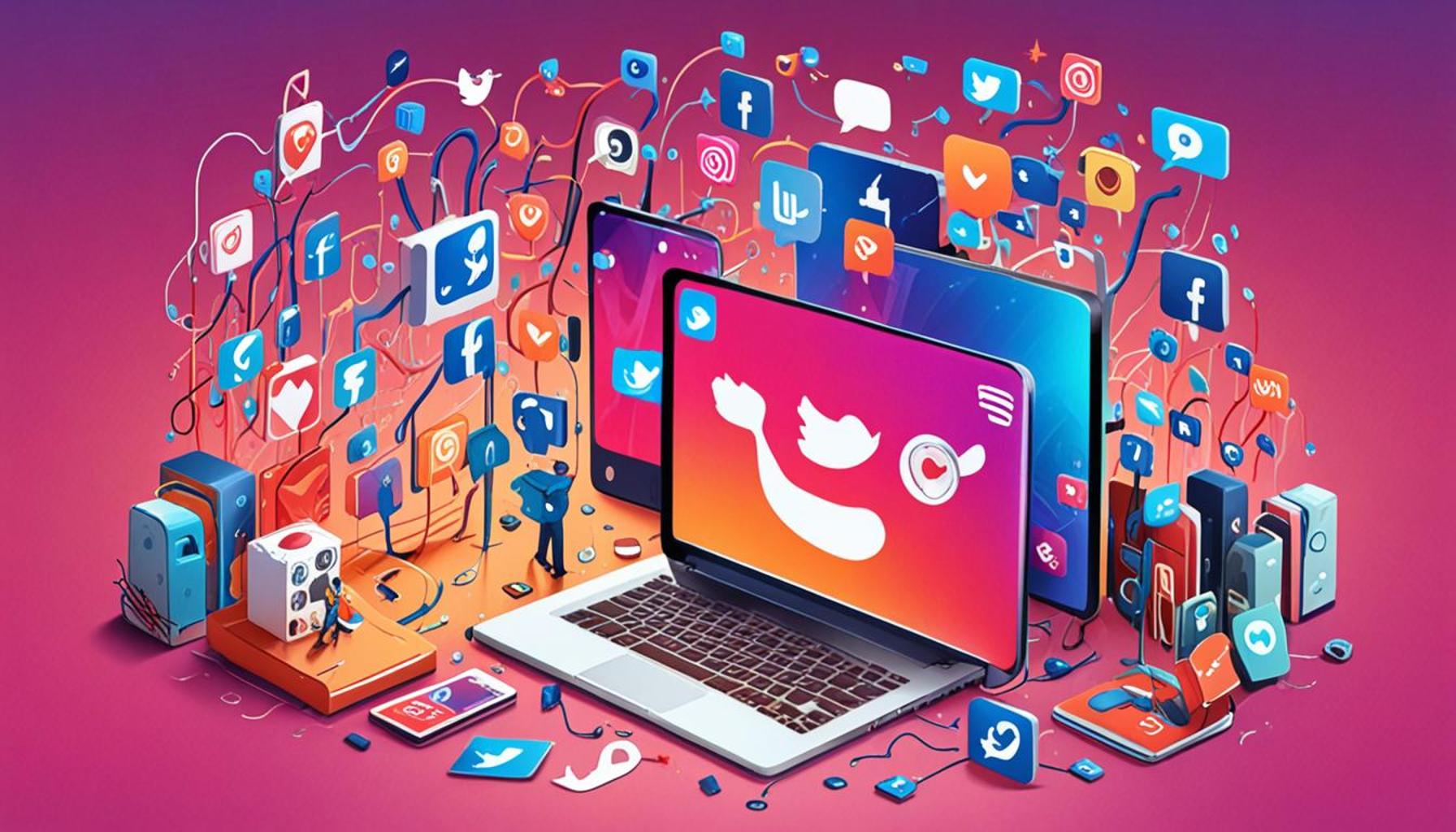The Role of Social Media in Raising Awareness for Government Benefits

The Role of Social Media in Information Dissemination
In an era where digital communication has become instantaneous and ubiquitous, the role of social media in disseminating information cannot be overstated. With over 300 million users in the United States actively engaging on platforms like Facebook, Twitter, and Instagram, these channels have transformed into critical venues for raising awareness of government benefits.
Government programs such as Social Security, Medicaid, and unemployment benefits are lifelines for many individuals and families; however, despite their importance, these services often remain underutilized due to a lack of understanding or awareness. Social media serves as a vital bridge in overcoming this informational gap by providing various benefits:
- Real-time updates on eligibility and application processes: Social media enables government agencies to post timely updates about changes in eligibility criteria or application procedures. For example, during the COVID-19 pandemic, many states used social media to inform citizens about the temporary expansion of unemployment benefits, allowing more people access to critical support.
- Facilitation of community engagement and discussion: Platforms like Facebook and Twitter encourage users to share their experiences with government programs, creating a collaborative environment where individuals can learn from one another. This peer-to-peer interaction can demystify complex processes and encourage participation among those who may have previously felt intimidated.
- Advocacy for underrepresented populations: Non-profit organizations leverage social media to highlight disparities in benefit utilization among marginalized communities. For instance, campaigns aimed at increasing enrollment in Medicaid have successfully utilized social media advertisements to target populations who may not have easy access to traditional information channels.
The capacity of social media to quickly circulate information and engage a vast audience is reshaping how citizens gain insights into their rights and available assistance. Research consistently indicates that individuals are more likely to seek government help when they encounter informative posts, shares, and discussions within their networks. A study from the Pew Research Center highlighted that nearly 70% of users feel they trust information found through social media when it comes from friends and family.
As we delve deeper into the impact of social media on awareness for government benefits, we will explore innovative strategies currently being implemented by various agencies and organizations. We will also examine the challenges that persist, such as misinformation and digital literacy issues, as well as the transformative power of community engagement in navigating these essential resources.
Ultimately, as the landscape of information dissemination continues to be shaped by technological advancements, it is imperative that both government entities and citizens harness the power of social media to ensure that vital support systems are accessible to those who need them most.
LEARN MORE: This related article may interest you
Innovative Strategies for Leveraging Social Media
As government agencies and non-profit organizations seek to effectively disseminate crucial information about government benefits, they are increasingly turning to social media platforms as key allies. The innovation lies not just in the use of these platforms, but in strategic approaches that maximize reach and engagement. Here are some noteworthy tactics being employed to raise awareness:
- Utilization of Visual Storytelling: Platforms like Instagram and TikTok have popularized visual content, making them ideal for sharing compelling stories that resonate emotionally with viewers. Government agencies can showcase real-life testimonials of individuals who have benefited from programs such as food assistance or healthcare coverage. These stories often inspire others to seek help, creating a ripple effect of engagement.
- Interactive Content and Polling: Many organizations are utilizing features like polls and questions to foster engagement and obtain feedback. By asking followers about their understanding of available benefits or what information would help them the most, agencies can tailor their outreach effectively. These interactions not only boost visibility but also empower users, making them feel part of the conversation.
- Hosting Live Q&A Sessions: Social media platforms offer live streaming functionalities that allow government representatives to directly address constituents’ queries in real-time. These sessions can clarify misconceptions, dispel myths about government programs, and provide immediate support. Promoting these live events significantly increases participation and extends the reach of information dissemination.
Moreover, the collaborative aspect of social media drives community involvement, making vital information more approachable. Users are more inclined to share posts or discuss programs when they see their friends and family engaging with such content. This network effect not only broadens the audience base for government benefits information but also increases the likelihood of uptake among individuals who may have been hesitant to seek assistance beforehand.
Data from studies illustrate the impact of social media campaigns: a significant 60% of users report that they discovered government benefits they were previously uninformed about through social media channels. This number highlights the urgent need for continued investment in social media strategies aimed at raising awareness on government assistance programs.
As social media continues to evolve, so too must the strategies employed to engage and inform the public. The challenge remains in ensuring that these efforts do not lead to information overload or create confusion among users. Effective communication is key, and as we further explore the potential of social media in this domain, we will also delve into the critical importance of combating misinformation and enhancing digital literacy among users to maximize the beneficial impact of social media on government benefits awareness.
| Advantage | Description |
|---|---|
| Increased Visibility | Social media platforms act as effective channels for disseminating information on government benefits, enhancing their visibility among diverse populations. |
| Engagement with Target Audiences | Using social media allows for direct interaction with potential beneficiaries, fostering engagement and enabling stakeholders to address specific concerns and questions. |
| Accessibility of Information | Platforms like Twitter and Facebook provide users with easy access to up-to-date information regarding eligibility and application processes for government assistance programs. |
| Viral Awareness Campaigns | Creative content can go viral, significantly boosting the reach of awareness campaigns about benefits, leading to a more informed public. |
CHECK OUT: Click here to explore more
Building Trust Through Transparent Communication
Establishing trust is paramount when disseminating information about government benefits, and social media provides a unique platform to enhance transparency. Government agencies can foster credibility by openly sharing details about programs, eligibility criteria, application processes, and timelines. Transparency not only builds rapport with constituents but also encourages more individuals to engage with the resources available to them. This approach is particularly effective in dispelling skepticism, as evidenced by the increase in social media followers and interactions with posts focused on clear, straightforward communication about government programs.
Further, frequent updates and reminders about deadlines or new benefits serve to keep the community informed. For instance, during the COVID-19 pandemic, many agencies utilized social media to share urgent updates regarding stimulus checks, unemployment benefits, and vaccination eligibility. A staggering 75% of users reported feeling more secure about processing their claims or understanding new programs due to regular updates from official social media accounts. Such proactive communication cultivates a sense of reliability, whereby citizens feel encouraged to share pertinent information with others in their communities.
Another significant advantage of using social media is its potential to reach diverse demographics. Multifaceted campaigns can utilize language options and culturally relevant content to ensure inclusivity. For instance, agencies like the Social Security Administration have tailored many of their posts to resonate with Latino communities by providing Spanish translations and showcasing individuals from these communities receiving benefits. This targeted approach broadens the outreach, making vital information accessible to those who may otherwise feel marginalized or disconnected from government programs.
Engaging Influencers and Community Leaders
Partnering with local influencers and community leaders is another innovative strategy that underscores the role of social media in spreading awareness of government benefits. Individuals who have established trust within their communities can amplify messages about government assistance through collaborative posts or public service announcements. For example, a local celebrity or activist discussing the importance of signing up for food assistance can create a sense of urgency and credibility that typical advertisements might lack.
Data suggests that messages promoted by trusted figures are on average shared up to 80% more often than standard promotional materials. Such partnerships can lead to a ripple effect, encouraging followers who may not have been aware of their entitlements to investigate available options actively. This is particularly useful in underserved communities, where traditional outreach methods may not penetrate as effectively.
Moreover, social media platforms enable organizations to create targeted ad campaigns to reach specific demographics that may be eligible for certain benefits. Utilizing algorithms, government agencies can tailor their outreach based on factors such as geographic location, interests, and online behavior. These platforms can analyze user data to ensure that tailored advertisements about veteran benefits, tax credits, or healthcare assistance reach those most likely to benefit.
This data-driven approach combines technology with human-driven outreach strategies, thereby enriching community engagement and reinforcing the government’s efforts to promote available benefits, ensuring that no individual is left uninformed. With more emphasis on precision and personalization in communication, the role of social media as a conduit for government benefits awareness continues to expand, illuminating new pathways for engagement and informed participation.
CHECK OUT: Click here to explore more
Conclusion
The impact of social media in raising awareness for government benefits cannot be overstated. Through clear communication and proactive engagement, agencies have the opportunity to reach diverse populations and establish lasting connections with constituents. As explored, the ability to share vital information regarding eligibility, application processes, and resources in real-time cultivates not only trust but also a sense of community empowerment. This is especially crucial in underserved areas where individuals may lack access to traditional outreach methods.
Furthermore, leveraging trusted voices within communities—be it influencers or local leaders—magnifies the reach of messages regarding government assistance. Data shows that such partnerships can dramatically increase engagement levels, ensuring that critical information reaches those who need it most. The data-driven targeting capabilities offered by social media platforms further enhance this effort, allowing for tailored messaging that resonates with varied demographics.
Ultimately, as we navigate a landscape increasingly influenced by technology and social media, it is imperative for government agencies to embrace these tools as vital allies in outreach initiatives. By continuously refining strategies and harnessing the power of social media, institutions can ensure that citizens are not only informed but also feel equipped to access their rightful benefits. As we look ahead, embracing this digital paradigm will be essential for fostering inclusivity and participation in government programs, marking a significant step towards intentional engagement and social equity.


